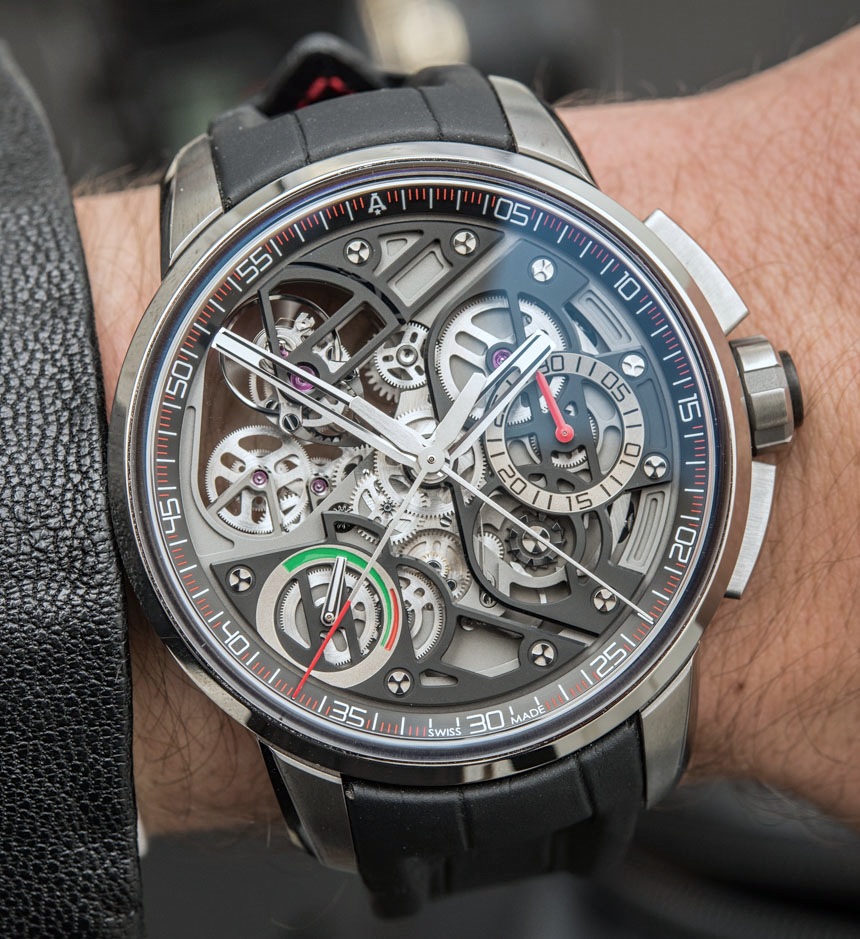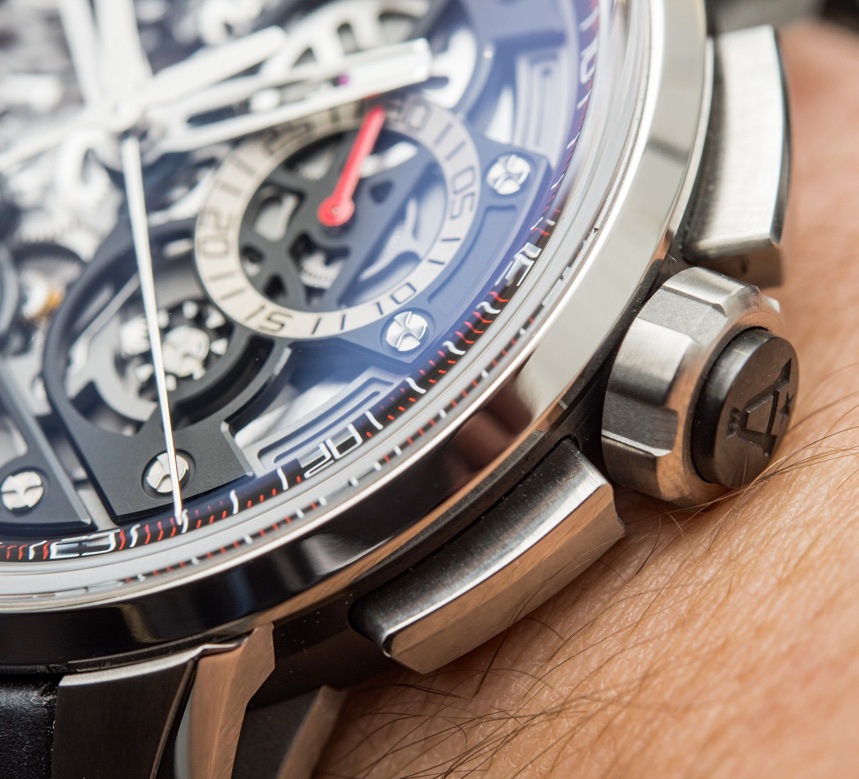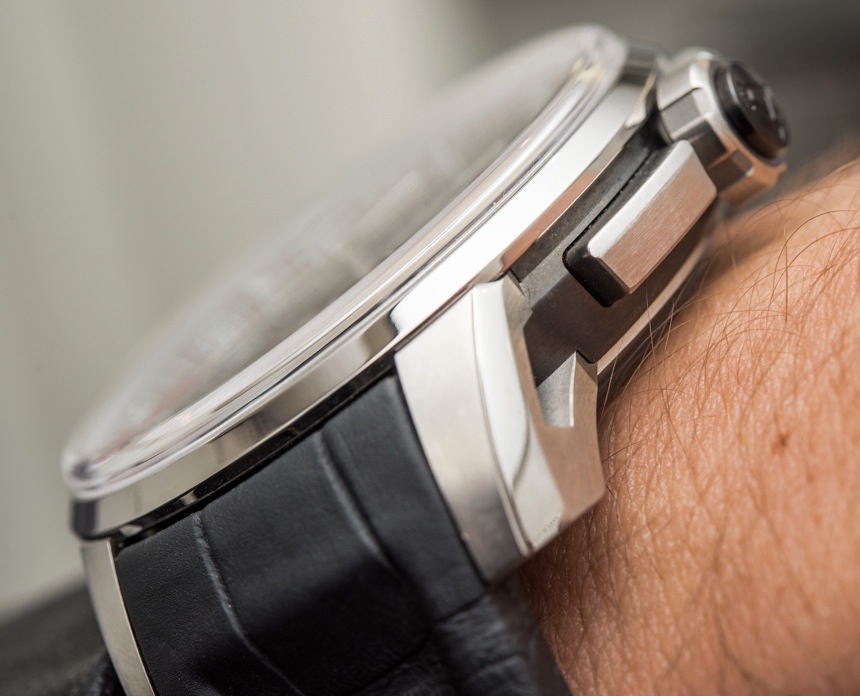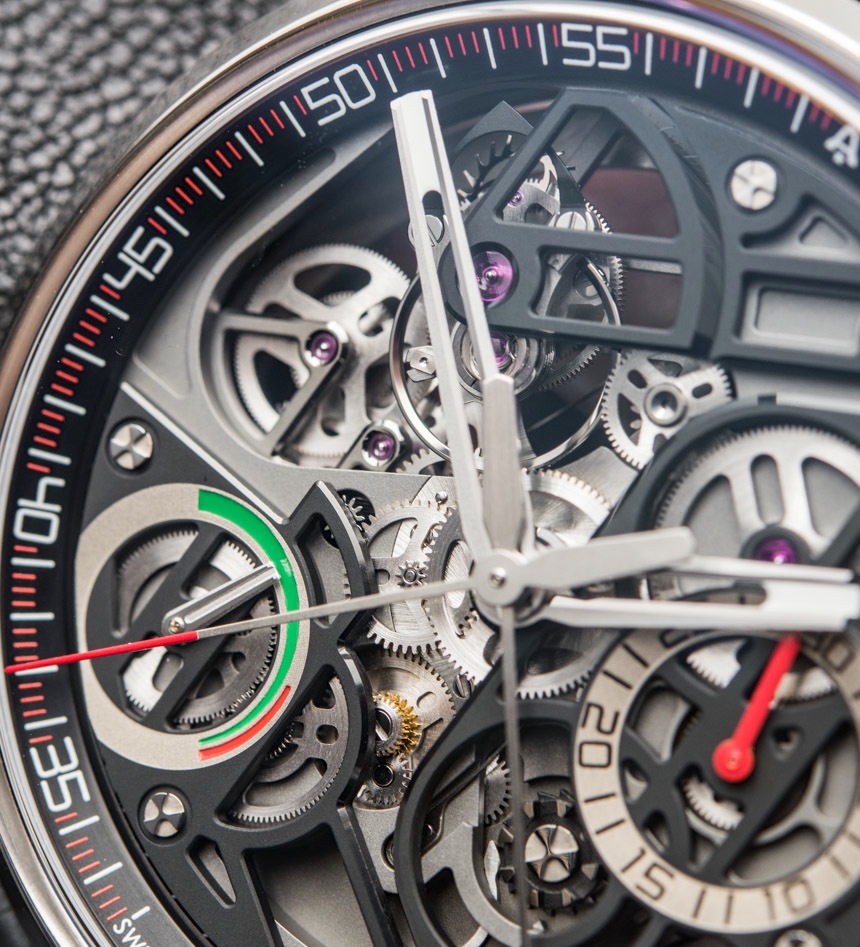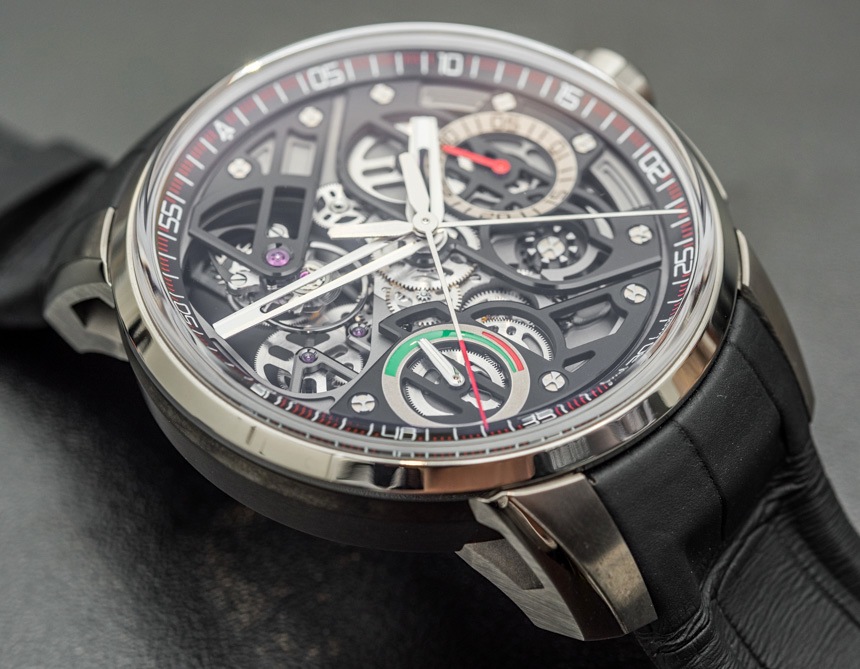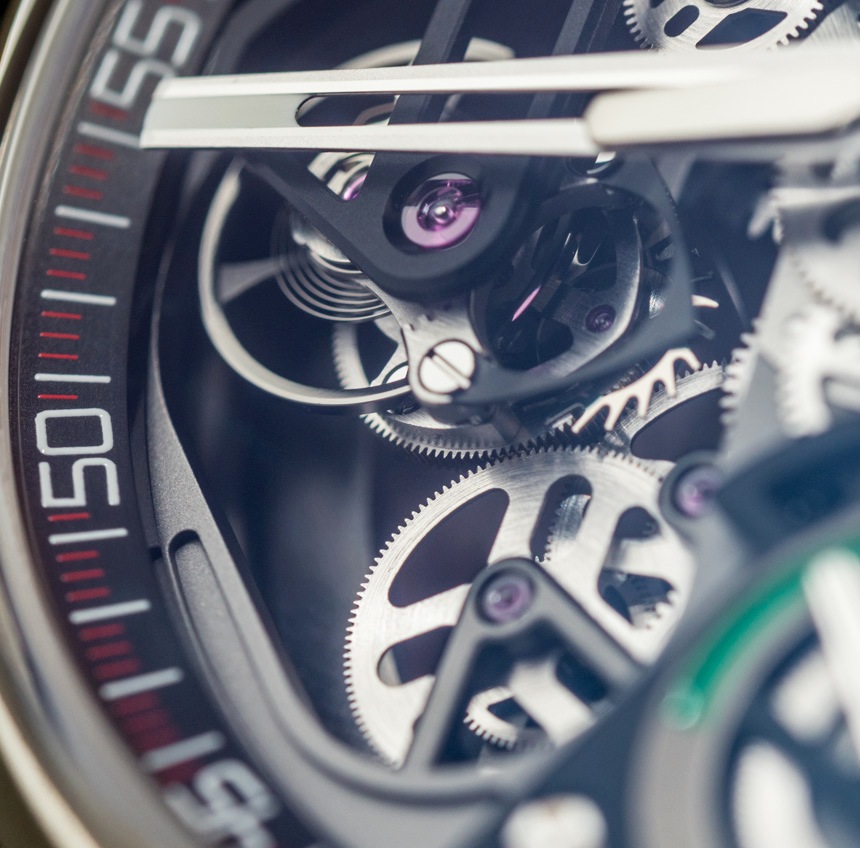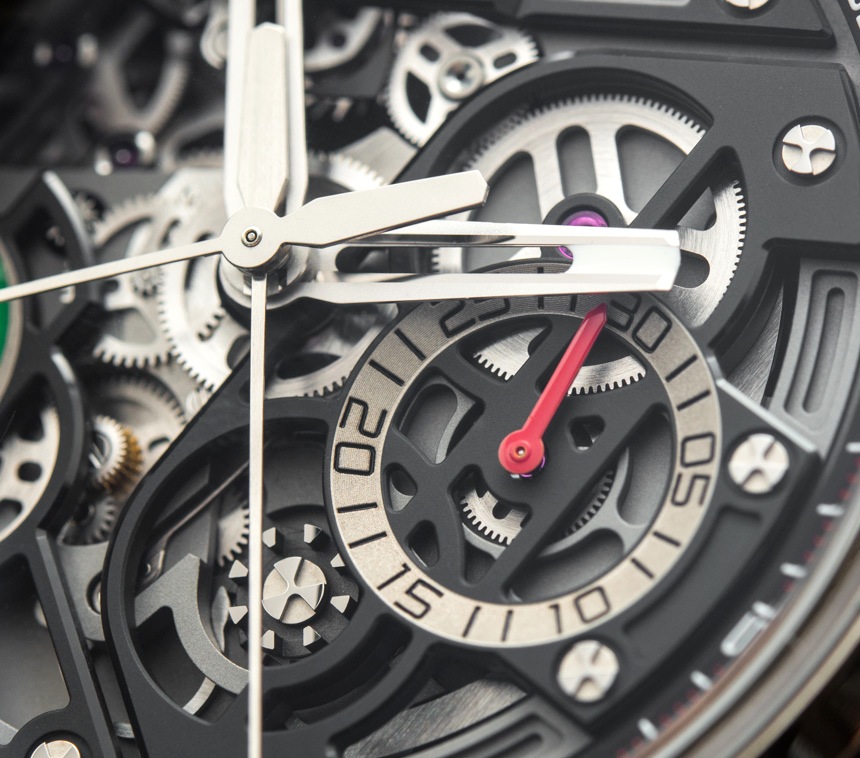
So far, we have established that the rattrapante flyback chronograph of the U30 is as technically impressive as it is mind-boggling, but what about overall quality of execution? The Angelus U30 Tourbillon Rattrapante carries on what seems to be a popular approach these days among modern high-end brands: all movement components look crisp and “contemporary,” ditching the traditional rhodium-plated parts in favor of a grey NAC-treated main plate and automatic bridge, and black ADLC-treated upper bridges, winding rotor, column wheels, and tourbillon cage. This grey- and black-colored layering of bridges makes for a high-contrast look that makes it really easy to appreciate the movement’s construction and how the integrated caliber works as an inseparable whole.

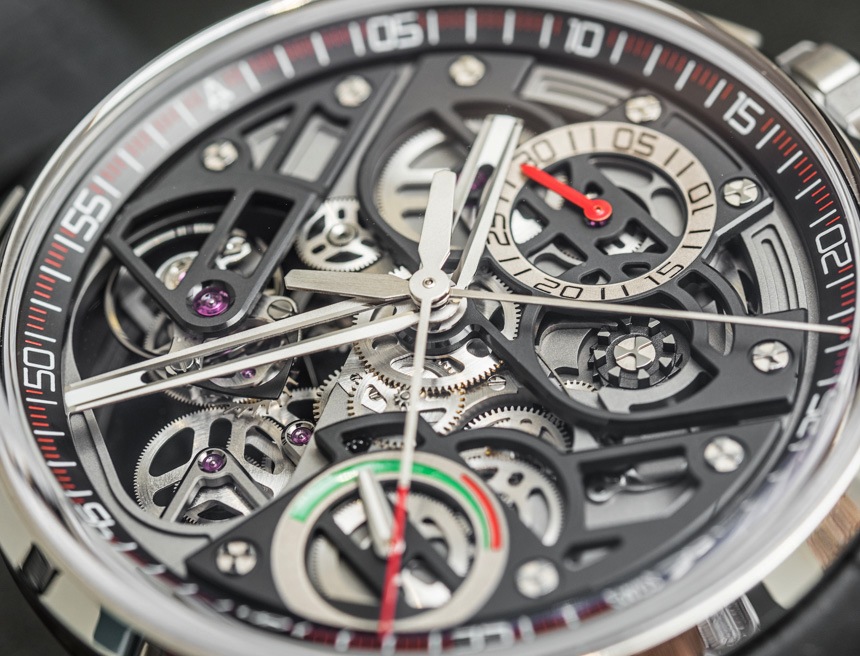
There is no dial, either, just two chapter rings; one around the inside of the bezel and one on the periphery of the chronograph 30-minute counter’s subdial. An interesting, dominant, and yet not immediately noticeable design element is the skeletonization of plates and bridges, where most all excessive material from their inner parts have been cut out. This helps take the otherwise already modern aesthetic further, and – as an additional benefit – provides a better look down and into the movement; I don’t think there is one single wheel inside of it that would remain unseen from either the front or the back.

This is not to say that hand-finishing has been omitted, but rather the contrary is true. Most components still have hand-bevelled and -polished chamfers – even if you do have to look hard to find those thin, shiny strips running along the edges of the parts. Some parts, such as the column wheels (on the front and one on the back of the movement) have been mirror-polished to make them stand out and “pop” from the rest of the movement – which works especially well when viewed in person as opposed to in static images.

The movement, in all its structural complexity, still looks very clean, with intelligently chosen surface treatments that make it easy to appreciate up close through a loupe, or from further away when worn on the wrist. The amply sized, skeletonized hands render legibility okay, if not great – we must bear in mind the evergreen compromise between legibility, not hiding parts of the movement and, last but not least, keeping the hands light for the movement to carry them with relative ease.
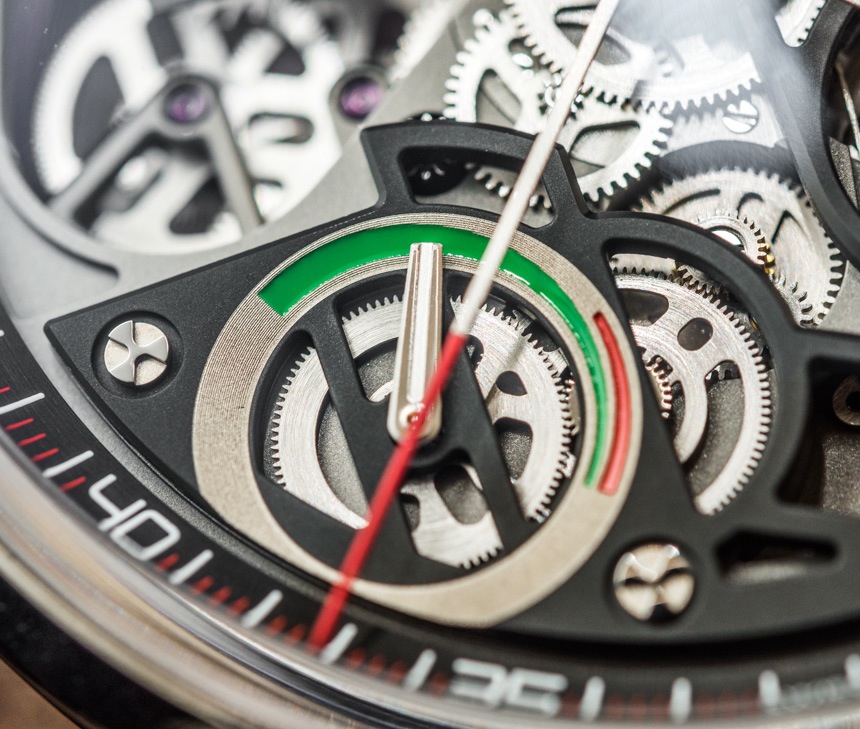
A cool little element of the dial is the power reserve indicator, driven by another series of wheels and pinions, and indicated by a hand pointing to a bowl-shaped disc that goes from red to green – reminding you when to wind the watch as the movement nears the end of its 45 hours worth of power reserve.

For the record, the Angelus U30 Tourbillon Rattrapante, as its name implies, also boasts a tourbillon – another rare treat in a split-second chronograph movement. Visually nicely separated from the rest of the movement thanks to its placement in an open space inside the movement, its one-minute rotation can be admired up close. It is driven by a series of wheels that snail around the movement, which further help lead one’s eyes to it.
Polished edges, uniquely designed wheels, and silver-grey-black elements surround it – it is a nod towards traditional watchmaking and, more importantly, some extra animation and movement to both the dial and the caseback.


Speaking of which, the caseback view is dominated by a massive winding rotor in black and silver, underneath which the second column wheel of the chronograph function can be spotted. On the opposite side of the generously sized pushers and crown is the cut-out that reveals the tourbillon and its going train – providing yet another splendid view on how it functions.

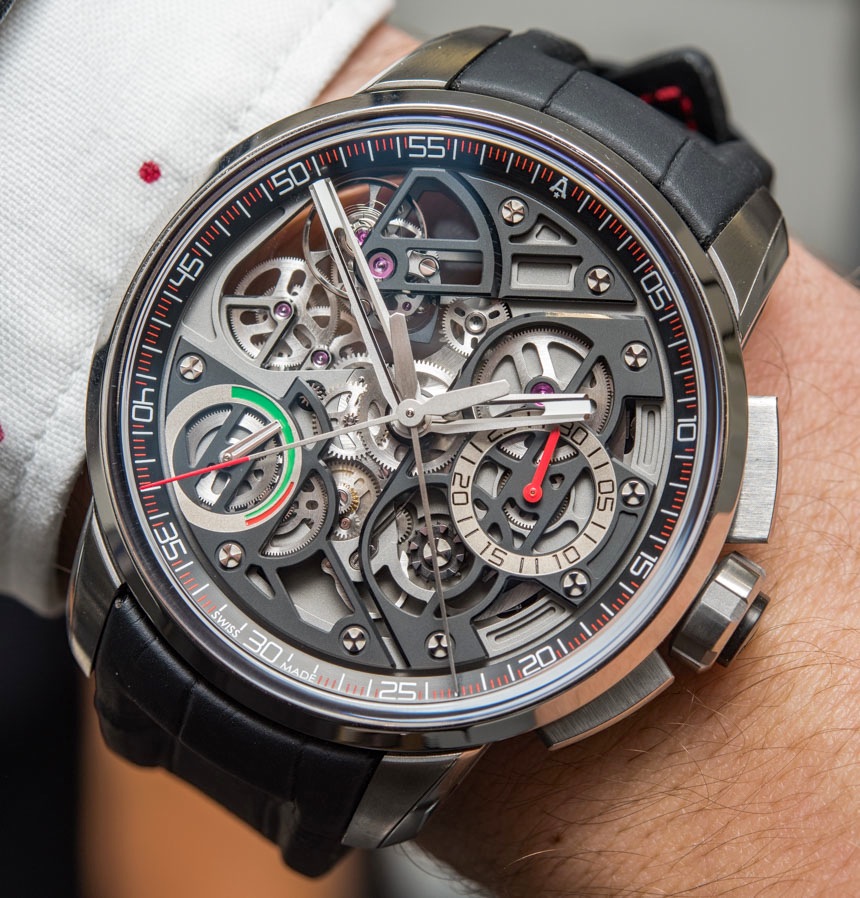
The case also has its own little negative spaces, with open areas behind and around the lugs – these will be a real pain to keep clean of dust, but sure add a bit of lightness to a case that could otherwise easily appear to be too bulky. At 47 millimeters wide and 15 millimeters thick, it is a large watch that nonetheless remains comfortable to wear thanks to its light grade 5 titanium construction and the splendid integration of its “stealth alligator” strap.

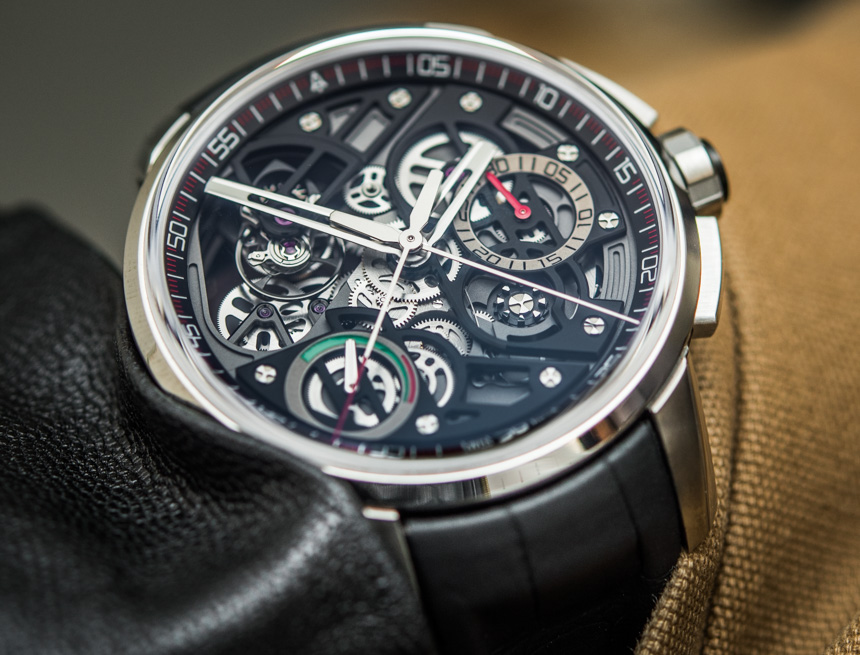
The Angelus U30 Tourbillon Rattrapante is priced at $59,950, which in this day and age, we can say is very competitive for a watch equipped with a tourbillon, one of the most complicated chronographs ever, and a properly designed and finished in-house movement. While this arguably would have made for a much more suitable re-introduction piece for the brand than what the U10 was a year ago, that takes nothing away from the sheer complexity of the Angelus U30 Tourbillon Rattrapante. I doubt it would take too long before most all of the 25 pieces in this limited edition run are spoken for. angelus-watches.com

